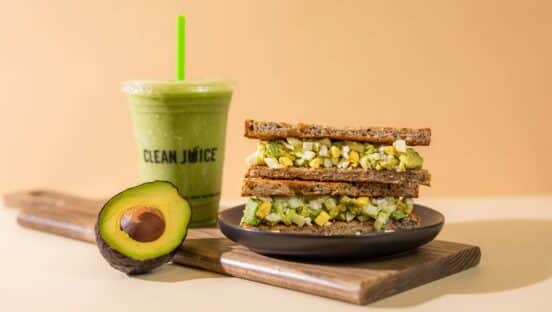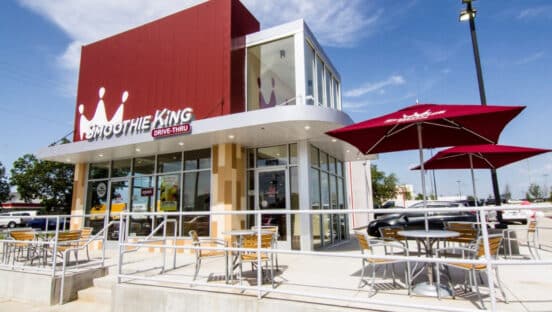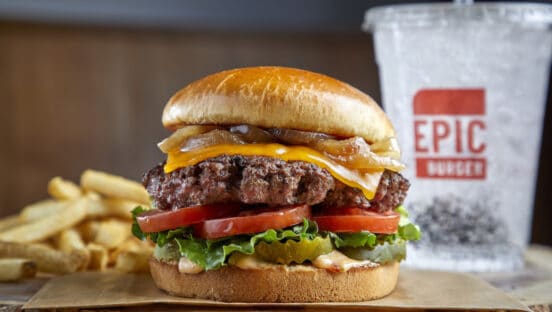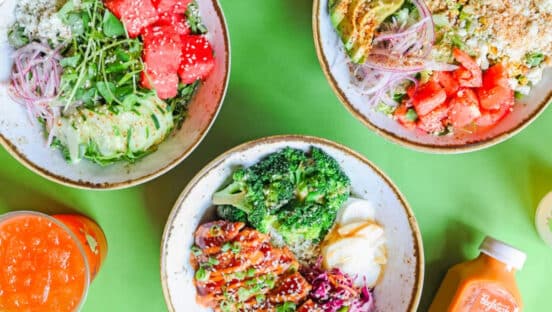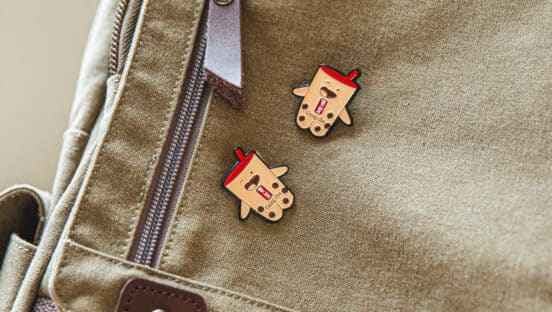After a promising 2021, Noodles & Company has its eyes set on expanding its footprint and digital presence, while also sprinkling in new menu items to sustain growth.
Same-store sales increased 22.1 percent systemwide year-over-year in 2021, including 21.3 percent for company-owned restaurants and 27.1 percent for franchises.
In the fourth quarter, comps rose 11.2 percent, including 9.5 percent growth for corporate locations and a 20.8 percent increase for franchises. So far in Q1, comps at company-owned locations rose 2.7 percent in January and 7.5 percent in February.
Total revenue for 2021 was $475.2 million compared to $393.7 million in 2020, an increase of 20.7 percent. In Q4, revenue rose 7.1 percent to $114.8 million.
AUV for 2021 was $1.3 million—an all-time high for the brand—and an increase of 22 percent over 2020 and 11 percent compared to 2019. AUV during Q4 was also up from previous years at $1.31 million, which represents 14.9 percent growth over 2020 and a 10.8 percent bump compared to 2019.
“We are very proud of our full-year financial results, which represent strong upward momentum toward our accelerated growth objectives even with a challenging market backdrop,” CFO Carl Lukach said on the Q4 earnings call.
READ MORE: Noodles & Company’s Growth Prospects Remain Strong
Noodles’ future plans center around three strategies: first, appealing to a broad range of lifestyles through innovative menu items. Second, activating the brand through digital assets and marketing strategy. And lastly, accelerating unit growth by taking advantage of the current operating model, which CEO Dave Boennighausen said is “ideally suited for today’s environment.”
On the menu front, Noodles launched two new salads in an effort to refresh the menu as the warmer months roll in.
“Our ability to optimize our menu innovation between healthy offerings and new spends on familiar favorites has been a hallmark of our brand, and now will continue in 2022,” Boennighausen said.
Also, digital channels continue to be a boon for the Colorado-based brand, with sales increasing 20 percent for the full year. Digital mixed 50 and 57 percent for 2021 and Q4, respectively.
“We continue to be impressed by the strength in this channel, which is bolstered again by how well our food travels for all premise occasions and the strength of our rewards program,” he said. “We continue to enhance the targeting of our marketing, as well as the capabilities of our digital assets, introducing a higher level of personalization to our guest engagement, thus enhancing the overall guest experience.”
One of the most successful digital initiatives the brand has undertaken is the Noodles rewards program, which now has more than 4 million members. Sixty-five percent of new members return for a second visit within a 60-day period, much faster than what the brand has seen in prior years.
“We believe this points to not only the power of the program itself but also has the ability to inform more effective targeted marketing communications,” he said.

In terms of expansion, Boennighausen said the acceleration of unit growth is “perhaps the most impactful strategy” out of the three. Stores that have opened in the last three years have performed better than “any group of new restaurants in our history.”
Noodles recently expanded into new markets, including the first franchising agreement in South Carolina. The brand also tested an off-premises-only location in Wisconsin, with an order-ahead drive-thru. The chain plans to open 35 stores in 2022; roughly 70 percent will be company-run. Seven are planned for the first quarter.
Although pandemic-driven construction delays have been a hindrance, the CEO doesn’t expect those headwinds to interfere with the growth strategy.
“While the balance of our 2022 opening will be somewhat backlogged given the current development environment, we remain very confident in the opportunity to accelerate unit growth to 10 percent beginning in 2023, with a proven 30 percent-plus cash-on-cash return model, again, perfectly suited for today’s environment,” he said.
The model Boennighausen referred to features an order-ahead drive-thru, like the unit tested in Wisconsin, and is more labor efficient. The model has received positive attention from franchisees.
Along with the new opening in South Carolina, Noodles announced franchise deals in West Texas as well as Southern New Mexico. This comes on the heels of the brand closing a deal in January with multi-concept restaurant operator Warner Foods. As part of the deal, Noodles will sell 15 company-owned locations in California to Warner, and the operator will also open 40 new stores in the Golden State over the next 12 years.
The company anticipates total revenues will range between $110 and $113 million in Q1, inclusive of mid-single-digit same-store sales growth. The first quarter is typically the slowest, due to most stores being located in cold weather markets, executives said.
Lukach said Noodles has felt inflation, both from a cost of goods and wage perspective. Outsized inflation related to the cost of boneless chicken breasts, which makes up about half of the brand’s protein expenses, will translate to COGS of 28-29 percent in the first quarter.
The CFO expects wage inflation to be high, as well, at around 33 to 34 percent of sales, driven by a “seasonally low first quarter and staffing inefficiencies at COVID-related temporarily closed restaurants.
“We are forecasting low double-digit wage inflation for the first quarter and remaining at elevated levels throughout the year with modest sequential improvement,” Lukach said. “Even with the anticipated wage inflation, we are forecasting a return to our target labor cost of 30 percent of sales by the second quarter this year.”
To combat some of the inflation, the company will increase menu prices 3-4 percent in the second quarter.
“We firmly believe the company has meaningful pricing power, particularly as the majority of our pricing actions during the past few years have been confined to the premium paid by our third-party delivery guests,” Lukach said. “That’s going to be a key offset.”
Noodles closed the year with 448 units, a mix of 372 company-owned and 76 franchised locations.



